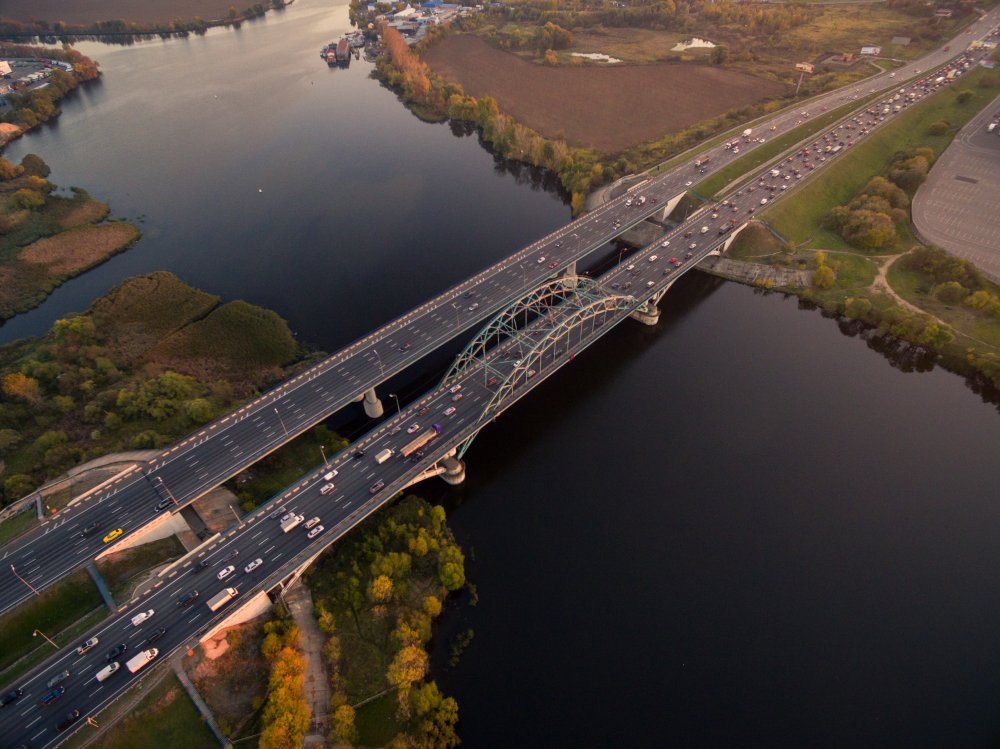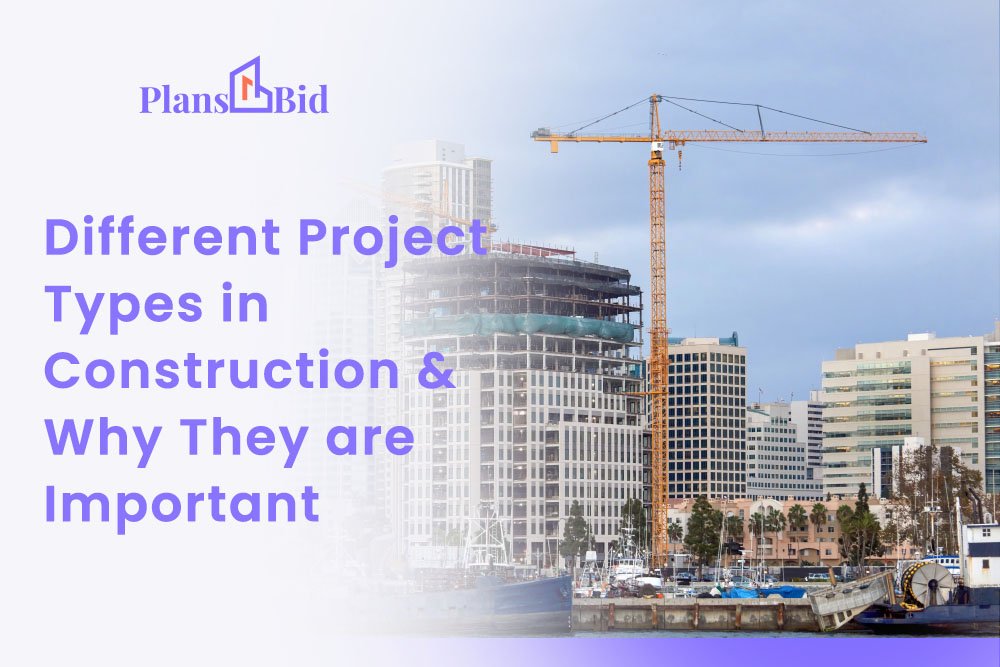The construction industry is vast, encompassing a wide range of projects that serve diverse purposes and communities. Each type of construction project involves unique challenges, budgeting, planning, and execution processes. As professionals or stakeholders in the construction sector, it’s essential to understand the various project types to ensure that decisions are based on proper expectations and guidelines.
In this article, we will discuss the various construction project classifications, the factors that influence their classification, specialized categories, and the key challenges each type presents. By the end, you will have a detailed understanding of how to navigate the complex of construction projects.
-
- Project Types: Construction projects fall into four categories: residential, commercial, industrial, and infrastructure.
- Specialized Trends: Green buildings, historical preservation, and mixed-use developments are growing in popularity.
- Challenges: Each project type presents unique challenges, from budget constraints to lengthy timelines.
- Influencing Factors: Budget, location, regulations, and timelines shape project decisions.
- Expertise Needed: Successful projects require experienced professionals for design, budgeting, and compliance.
What Are Project Types in Construction?
Project types in construction refer to the different categories into which construction projects can be classified. These classifications help professionals understand what to expect during the design, planning, and execution stages of the project.
Construction projects can vary in scale, purpose, and complexity, ranging from small residential homes to large-scale infrastructure developments.
The Importance of Project Classification
Understanding project types is crucial for several reasons:
- Tailored planning: Each type requires different planning strategies.
- Resource allocation: Different projects demand different types of materials and labor.
- Compliance: Various projects must adhere to specific regulations, zoning laws, and safety standards.
- Budgeting: Financial considerations and costs differ by project type, impacting project scope and execution.
Different Types of Construction Building Projects
Construction projects can be broadly divided into four main categories: residential, commercial, industrial, and infrastructure. Let’s break these down in detail.
Get helpful resource on different kinds of blueprints in construction.
1. Residential Projects
Residential construction projects are some of the most common types of construction. Thtey involve the building or renovation of homes and living spaces. These projects can be large or small, ranging from single-family homes to large apartment complexes.
Single-family Homes: Typically built for individual families, these projects involve constructing standalone homes.
Multi-family Dwellings: This includes apartment buildings, condominiums, and duplexes, which require specialized design to cater to multiple families.
Luxury Residences: High-end residential properties, often characterized by custom designs, extensive square footage, and specialized construction techniques.
Home Renovations: Involving the updating or remodeling of existing homes, these projects often require careful planning due to their personalized nature and existing building constraints.
Key Considerations: Zoning laws, neighborhood compatibility, and local building codes play a significant role in residential projects.
2. Commercial Projects
Commercial construction refers to projects that are built to house businesses, public services, and commercial establishments. These projects often contains large-scale planning, advanced design, and construction methods.
Office Buildings: These are commercial spaces designed for business offices, often featuring multiple floors, advanced technology systems, and specialized building materials.
Retail and Shopping Centers: This includes the construction of malls, shops, and retail spaces, which require specialized considerations for consumer traffic and operational efficiency.
Hotels and Hospitality Projects: Hotels and resorts require unique architectural elements, systems for guest management, and high standards for comfort and luxury.
Healthcare Facilities: Hospitals, clinics, and health centers require specialized infrastructure that includes safety, hygiene, and accessibility features.
Educational institutions, such as schools, colleges, and universities, often require specialized designs to accommodate large volumes of people and diverse activities.
Key Challenges: The complexity of commercial projects necessitates coordination among various stakeholders, including architects, city officials, and contractors, as well as adherence to stringent regulatory standards.
3. Industrial Projects
Industrial construction encompasses projects aimed at building factories, manufacturing plants, and large-scale facilities for specialized production processes.
Factories and Manufacturing Plants: These projects involve designing and building spaces for industrial production, requiring knowledge of workflow optimization and the integration of heavy machinery.
Warehouses and Distribution Centers: These facilities are designed for the storage and movement of goods, often incorporating advanced logistics systems and technologies.
Power Plants and Energy Facilities: Industrial projects in the energy sector, including renewable energy installations, demand highly technical expertise and safety measures due to the nature of their operations.
Key Considerations: Industrial projects require specialized knowledge of building for heavy machinery, automation systems, and regulatory compliance.
4. Infrastructure Projects
Infrastructure projects involve large-scale initiatives aimed at enhancing public utilities and services in a specific area. These types of projects have a significant impact on communities and require meticulous planning and extended timelines.
Transportation Infrastructure: Roads, bridges, railways, and airports are all part of transportation-related construction projects.
Utilities Infrastructure: Water systems, sewer lines, electricity grids, and other essential public utilities form the backbone of infrastructure projects.
Public Amenities: Dams, public parks, and community centers fall into this category, serving large communities over the long term.
Long-term Impact: Infrastructure projects often involve high public scrutiny, government oversight, and long-term maintenance considerations.

Specialized Types of Construction Projects
These construction projects ususally are:
1. Sustainable and Green Building Projects
As environmental concerns continue to rise, sustainable construction has become a significant trend. Green building projects prioritize reducing energy consumption, utilizing renewable resources, and minimizing environmental impact. These have:
LEED Certification: Buildings designed and constructed to meet the standards for Leadership in Energy and Environmental Design (LEED) certification.
Energy-Efficient Buildings: Construction that focuses on reducing energy use, such as solar panels, energy-efficient HVAC systems, and high-performance insulation materials.
Eco-Friendly Materials: Utilizing sustainable materials like recycled steel, reclaimed wood, and low-impact finishes.
2. Historical Preservation and Renovation Projects
Historical preservation involves maintaining and restoring historical buildings to preserve their cultural significance. This type of project requires expert knowledge of traditional construction techniques, and careful attention to detail is needed to maintain historical accuracy.
3. Mixed-use Developments
Mixed-use developments combine residential, commercial, and sometimes recreational spaces within a single location. These developments are particularly popular in urban settings, where maximizing land usage is crucial.
IBC Classification of Construction Projects
The International Building Code (IBC) categorizes all building construction into five primary types based on two critical factors:
- The combustibility of the materials used, and
- The fire-resistance rating of structural components such as walls, floors, and frames.
These classifications help architects, engineers, contractors, and code officials ensure that buildings meet appropriate life safety, structural integrity, and fire protection standards. Below is a breakdown of the five IBC construction types:
Type I – Fire-Resistive Construction
Description: Offers the highest level of fire resistance, with structural elements designed to withstand fire exposure for 2 to 4 hours.
Materials: Non-combustible materials such as reinforced concrete, steel, or masonry.
Common Uses: High-rise buildings, hospitals, government facilities, stadiums, and large institutional structures.
Benefits: Maximum safety for occupants; slows structural collapse during fires.
IBC Fire Rating: Typically 3–4 hours for structural elements.
Type II – Non-Combustible Construction
Description: Constructed from non-combustible materials but with less fire-resistance than Type I. Fire resistance is typically 1–2 hours.
Materials: Steel or concrete structures with minimal fireproofing.
Common Uses: Mid-rise commercial buildings, distribution centers, storage facilities, and newer warehouses.
Benefits: Cost-effective non-combustible option; lighter protection than Type I.
IBC Fire Rating: 1–2 hours for key structural components.
Type III – Ordinary Construction
Description: Also known as “brick and joist” construction. These buildings use non-combustible exterior walls (e.g., brick or block) but may contain combustible interior elements such as wood.
Materials: Masonry exteriors; wood-framed floors, roofs, and interiors.
Common Uses: Low- to mid-rise apartment buildings, older commercial buildings, and schools.
Benefits: Durable exterior with flexible interior design.
IBC Fire Rating: 0–2 hours, depending on components.
Type IV – Heavy Timber (HT) Construction
Description: Features large exposed wooden beams and columns, which naturally resist fire due to their slow char rate.
Materials: Heavy timber members (minimum dimension specifications), minimal steel.
Common Uses: Restored industrial buildings, warehouses, churches, artisan retail spaces, and some modern eco-friendly designs.
Benefits: Combines structural integrity with aesthetic appeal and moderate fire resistance.
IBC Fire Rating: Up to 2 hours, due to the mass timber’s fire behavior.
Type V – Wood-Framed Construction
Description: Composed entirely of combustible materials, usually light wood framing. Offers the lowest fire resistance of all IBC types.
Materials: Dimensional lumber or engineered wood (e.g., trusses, joists).
Common Uses: Detached homes, townhouses, small apartment buildings.
Benefits: Affordable, flexible, and easy to build; commonly found in residential developments.
IBC Fire Rating: Typically 1 hour or less for structural components.
Factors Influencing Project Type Selection
Several factors contribute to determining the type of construction work:
Budget
Available funding sets the limits for design, material selection, labor costs, and construction type. Projects with tight budgets often rely on cost-effective systems such as wood framing, while high-budget developments can support non-combustible materials, complex designs, and enhanced fire resistance. Budget also influences the decision to build in phases or use prefabricated methods.
Geographic Location
The physical location of a project affects site access, transportation logistics, and service availability. Remote or rural sites may increase material delivery costs and labor availability issues, while urban sites often come with space constraints, zoning restrictions, and staging limitations. Geography also influences local construction labor markets and the availability of subcontractor pools.
Environmental Conditions
Local climate, topography, and geotechnical conditions dictate engineering requirements. Seismic activity, flood risk, snow loads, and high winds all impact the design of structural systems and foundations. Soil type, water table levels, and drainage conditions may restrict the types of buildings that can be constructed without costly mitigation.
Regulations
Local zoning laws and building codes govern use type, structure height, density, setbacks, and safety requirements. Each jurisdiction enforces different rules for fire protection, energy efficiency, and accessibility. Construction type must conform to these codes to secure permits and avoid penalties.
Timeline
Project schedules affect the feasibility of certain construction types. Short timelines often require prefabrication, modular systems, or simplified scopes. Time-sensitive projects may avoid custom materials or complex approvals, while extended timelines offer flexibility for more sophisticated builds.
End-User Requirements
A building’s function determines its spatial layout, performance standards, and compliance needs. Facilities such as hospitals, schools, and warehouses each require specific mechanical systems, load capacities, and fire ratings. Construction type must support the operational and technical demands of the user.
Stakeholder Preferences
Owners, investors, and occupants influence construction choices based on cost, aesthetics, durability, and sustainability goals. Some prioritize energy efficiency or green certifications, while others focus on speed or reduced upfront costs. Risk tolerance also affects willingness to adopt newer methods or materials.
Challenges for Each Project Type
Each type of building project comes with its unique set of problems.
Residential: Managing personal expectations, working with tight budgets, and adhering to local regulations.
Commercial: Balancing stakeholder interests and managing large, multi-phased projects.
Industrial: Overcoming regulatory hurdles, managing safety, and integrating heavy machinery.
Infrastructure: Coordinating with government agencies, managing public resources, and addressing long-term community needs.
Wrap Up
Understanding the various project types in the construction industry is crucial for anyone involved, whether as a stakeholder, client, or contractor. By understanding the specific needs and challenges associated with each project type, you can ensure that your construction plans are efficient, cost-effective, and compliant with all relevant regulations.
For those interested in starting a construction project or looking to improve an existing one, it’s essential to collaborate with experienced professionals who can guide you through the specifics of your project type, ensuring its successful completion.
